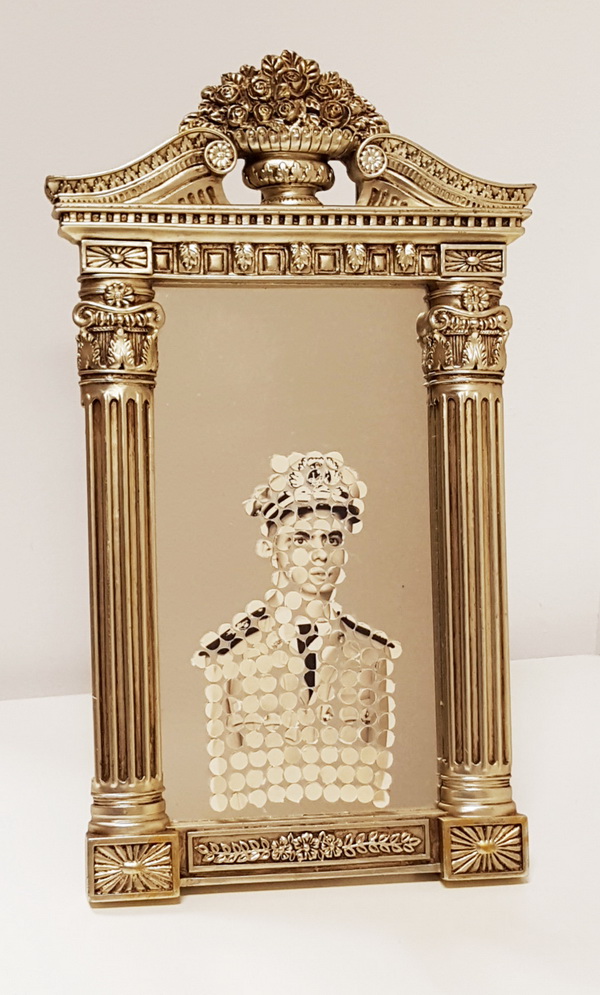Joseph Heidecker’s collection of embroidered photographs at Craig Krull Gallery is a celebration of textile fauvism. The altered vintage photographs elicit a dissonant response, with subjects’ faces veiled in thread in an almost painterly manner that is reminiscent of Derain and Matisse. The obscuration of figures is both aesthetically pleasing and repulsive, as the viewer is forced to piece together the impression of light and form through converging sections of thread stitched in opposing directions.
The pieces give a dreamlike impression as if one has entered a room where the phantoms of the past are suspended all around, but in a manner where the features can’t quite be remembered, in which faces and figures blur with the passage of time. The identity of the figures seems altered by Heidecker’s hand, as a reminder of the perpetual shifting of history through its retelling. The omnipresent atmosphere of nostalgia evoked from the vintage quality of the photographs is excitedly transposed with the almost blasphemous covering of the subjects in a manner reminiscent of masks, making the pieces seem almost like a big middle finger to sentimentality and preservation.

Joseph Heidecker, Orange Camera/CBS, 2016. Courtesy of Craig Krull Gallery, Santa Monica, California.
Most of the works, like Side Flare (2016) and Italian Pomp (2016) are black-and-white photographs embroidered in a grayscale, giving a monochromatic impression. Others, like Silver and Gold Weight Lifter Woman (2014) and Orange Camera/CBS (2016) have a flash of a single golden-yellow color theme. The pieces that really shine, though, are the brightly colored Red Hat & Jacket (2015), Red Joan (2015), and Norma Flower (2015); these works are most representative of fauvism, with shadows rendered in bright reds and blues.
Notably, only two pieces—Solider (2016) and Male Silver and Gold Model (2014), examples of valor and victory—depict men. The other 18 works in the show are of women, mostly in standard glamour poses with titles related to their physical attributes. One may question Heidecker’s relation to femininity, and his compulsion to explore the identity and portrayal of female subjects. While these works may ironically be exploring past views of women, they depict women in typically reductive hetero-normative ways. It’s not entirely clear if Heidecker is poking fun at these representations and modes of thinking; what’s more likely, however, is an idealistic clinging to aesthetics that both he and society are comfortable with.
Stitching and embroidering photographs is nothing new. Quite a few contemporary artists, including Hinke Schreuders, Julie Cockburn and Maurizio Anzeri, have been creating works of embellished vintage photographs for years with critical and financial success. What makes Heidecker’s work different, however, is his integration of embroidery within the photographic image. Unlike other artists working in this niche, he seems to transcend the word “embellishment”; instead of the embroidery appearing to be an element on top of the photograph, it seems to be inside the photograph, breathing new life into it, and transforming it from within.


